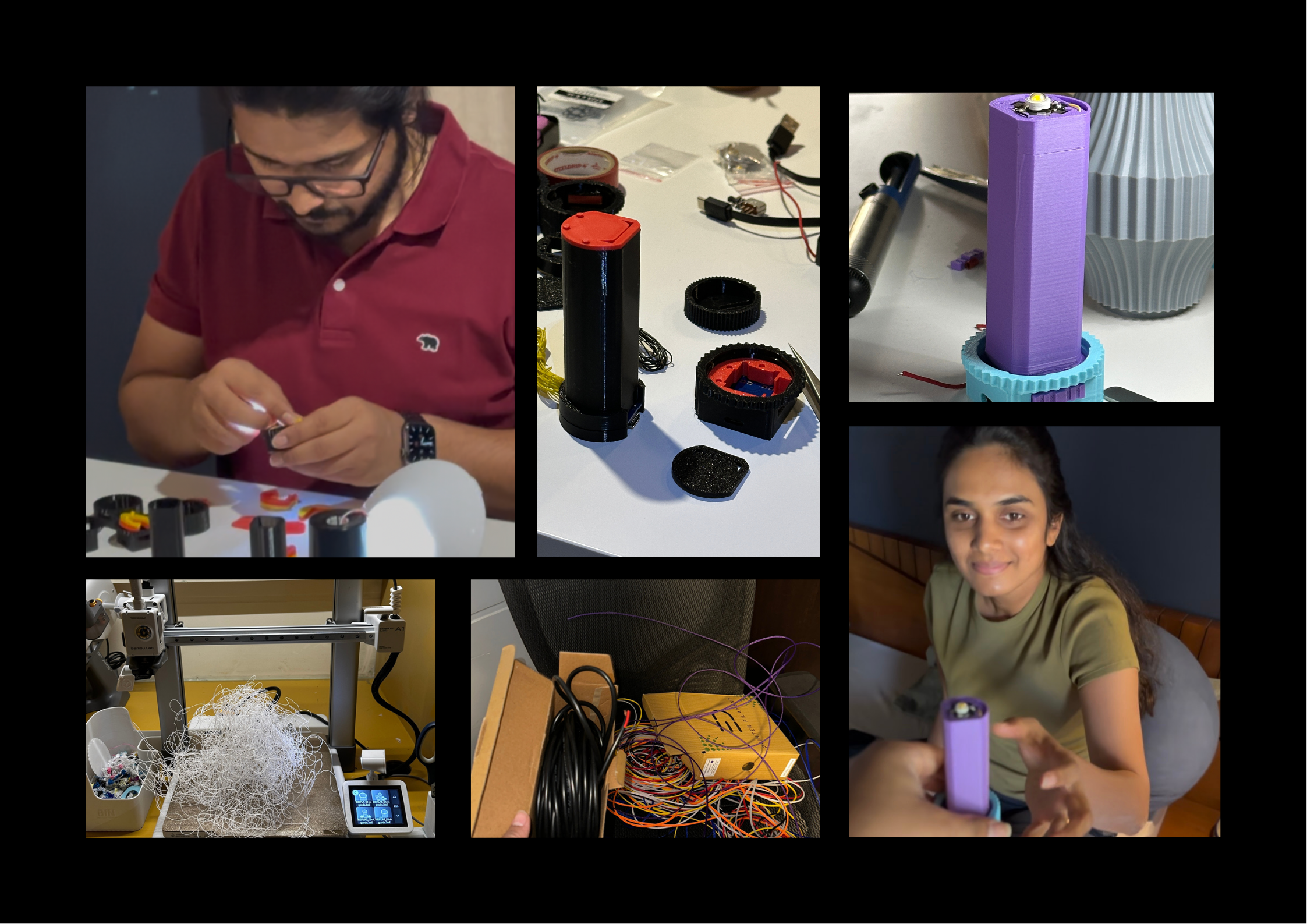When I built the first Vaari prototype, I had no idea how complicated and rewarding the journey would be.

I wasn’t a product engineer. I wasn’t an electronics expert. I was just a designer obsessed with one question:
How can a single light adapt to different moods, spaces, and lives?
I wanted a modular lighting system that would allow one base to carry endless designs. A light you could move, twist, and reimagine without needing an electrician.
What started as a sketch quickly turned into months of trial, error, and learning.
Starting From Scratch
I began prototyping in a small corner of my old office in Pune. I didn’t have a fancy workshop. I had:
- A 3D printer
- Some MDF sheets for basic shaping
- Deburring and Bosch tools for carving and finishing
I skipped cardboard models and went straight to 3D printing. I wanted to see and feel the system in real life. My goal was simple: create a structure that could allow multiple lamp designs to attach to one core system.
What I didn’t expect was just how hard it would be to make the parts come together.


The Hardest Part: Making It Work
The first challenge was assembly.
How do you connect multiple interchangeable pieces in a way that’s stable, secure, and repeatable?
I experimented with:
- Screws and mounting brackets
- Twirling locks and clamp mounts
- Push-pin and press-fit mechanisms
Every system seemed to fail in some way. Either it was loose, too complex, or impossible to replicate consistently. It was frustrating, and I spent weeks testing different combinations.
Then came the electronics problem and this was a whole new world for me.

Learning Electronics From Zero
I had never soldered in my life. I didn’t know what electronic components went into a portable lamp.
At first, I assumed it would be impossibly technical. But I slowly realized that making a simple, functional lamp is manageable if you break it down into steps:
- Learn which components you need (LEDs, batteries, switches, connectors).
- Figure out where to source them.
- Learn how to assemble and solder them.
Pune has a lane called Tapkir Galli, famous for its electronic shops. I spent weeks wandering through it, asking questions I barely knew how to phrase, not knowing exactly what I needed.
Some components I finally ordered online. Some I hunted down in person.
Then I bought my first soldering kit, clamps, and tools.
The first time I soldered a circuit, it was terrible, ugly blobs of metal holding fragile wires together. But when the LED turned on, it felt like a victory.


The First Light
The first Vaari prototype was far from perfect:
- The LED light was a harsh yellow, not warm, not cozy.
- The soldering was messy and uneven.
- The assembly was fragile and needed constant adjustments.
But it worked.
I’ll never forget showing it to my wife, our first and bravest product tester. Her excitement told me something important: even an imperfect idea has power if it moves people.
The Lessons That Shaped Vaari
That messy first prototype taught me more than any tutorial could:
- You can’t skip the hands-on struggle. Books and videos help, but building teaches faster.
- Sourcing is a skill. Knowing where to get components is as important as knowing how to design them.
- Function before perfection. A working ugly prototype is better than a beautiful idea in your head.
- Iterate without ego. Every failure was a clue for the next version.
Today, Vaari Lights are modular, portable, and crafted with care. But behind every finished product is that first shaky lamp, the burnt fingers, and the weeks of wandering Tapkir Galli.
From Failure to Function
Vaari’s journey from the first prototype to a polished product is proof of one thing:
Keep going. Build, break, learn, and keep moving.
If the first attempt feels messy, it means you’re learning something real.
That first imperfect light became the seed of a product line now designed to move with people, moods, and moments, just the way I always imagined.

